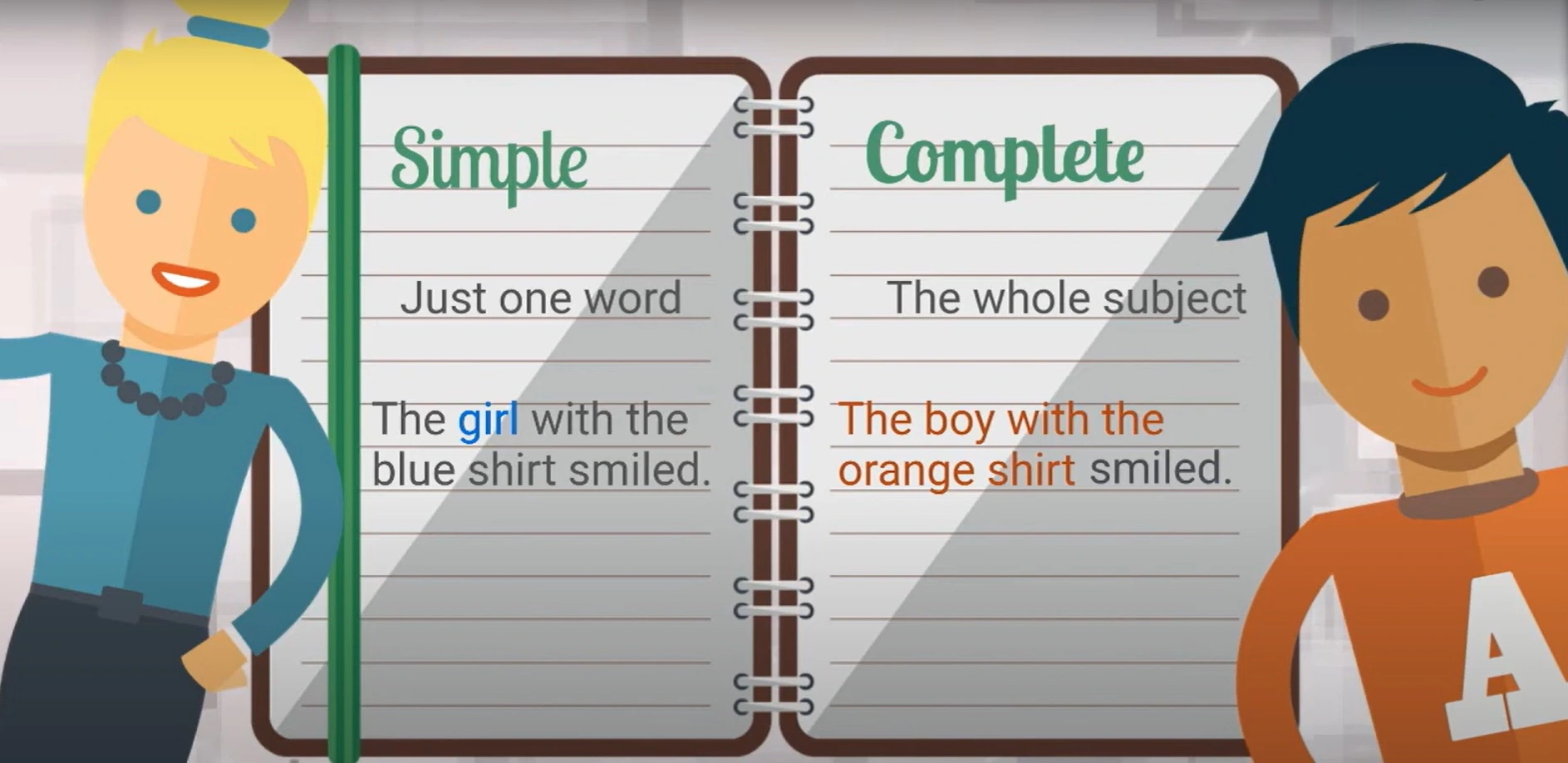Have you ever wondered why some sentences feel clear and vivid while others seem incomplete? The answer often lies in how well the sentence is structured, particularly in distinguishing between the complete subject and the simple subject. These terms may seem technical, but understanding them can significantly improve your writing. A complete subject consists of the main noun or pronoun along with all its modifiers, while the simple subject is just the core noun or pronoun itself. Let’s break this down further and see how these two elements work together to build better sentences.
What Is a Complete Subject?
The complete subject is all about detail. It doesn’t just name the person, place, or thing the sentence is about—it adds descriptive information that enriches the sentence. For example, in the sentence, The bright yellow sunflower swaying in the breeze is beautiful, the complete subject is The bright yellow sunflower swaying in the breeze. This gives us a full picture of what is being described. The words surrounding the main noun, like bright yellow and swaying in the breeze, are modifiers that enhance the meaning.
Modifiers in the complete subject help create vivid imagery or clarify meaning. Without them, the sentence would lose its richness. For instance, saying The sunflower is beautiful is clear, but it doesn’t have the same impact as the earlier example. Understanding the complete subject allows you to add texture and depth to your writing when needed.
What Is a Simple Subject?
The simple subject is the backbone of the sentence. It’s the most basic part of the subject—the main noun or pronoun that tells us what the sentence is about. It leaves out all the modifiers and descriptive elements. Using the same example, The bright yellow sunflower swaying in the breeze is beautiful, the simple subject here is sunflower. It’s the central element, without any extras.
A simple subject is especially useful when clarity and brevity are your goals. Stripping down to the basics ensures your reader immediately understands the main focus of the sentence. However, relying only on simple subjects can sometimes make your writing feel flat or uninteresting, so it’s crucial to strike a balance between simplicity and detail.
How to Identify the Complete Subject
Finding the complete subject in a sentence starts with identifying the verb. Once you’ve pinpointed the verb, ask yourself, “Who or what is performing this action?” Everything in the sentence that answers this question forms the complete subject. Let’s look at an example:
The large black dog with a shiny coat barked at the mailman.
In this case, the verb is barked, and the complete subject is The large black dog with a shiny coat. It includes not just the main noun (dog) but also all the words that describe it.
By practicing this method, you can quickly spot the complete subject in any sentence, no matter how complex.
How to Identify the Simple Subject
Once you’ve identified the complete subject, finding the simple subject is just a matter of removing the modifiers. Let’s use the previous example again:
The large black dog with a shiny coat barked at the mailman.
Here, the simple subject is dog. It’s the essential noun that the rest of the sentence revolves around.
Focusing on the simple subject can help streamline your writing, particularly when the details aren’t necessary. This approach works well for technical or straightforward writing, where brevity is key.
Complete Subject vs. Simple Subject in Everyday Writing
When should you use a complete subject instead of a simple subject? It largely depends on the type of writing you’re doing. In casual conversations or instructional content, simple subjects can make your message clearer and more direct. For example, The dog barked gets straight to the point. However, in creative or descriptive writing, a complete subject can add richness and engage the reader more effectively. Compare:
- The dog barked.
- The large black dog with a shiny coat barked ferociously at the mailman.
The second version paints a more vivid picture, pulling the reader into the scene. Knowing how to alternate between the two can improve the quality and impact of your writing.
Common Mistakes with Complete and Simple Subjects
Even seasoned writers can trip up when it comes to distinguishing between the complete subject and the simple subject. Here are some pitfalls to watch out for:
- Confusing the modifiers as part of the simple subject. Example: The girl’s long hair fluttered in the wind. Simple subject: girl (not girl’s long hair).
- Overlooking compound subjects. Example: Tom and Jerry chased each other around the house. Simple subject: Tom and Jerry. Complete subject: Tom and Jerry chased each other around the house.
Adding Modifiers to Complete Subjects
Modifiers are the unsung heroes of complete subjects, and they play a critical role in making your sentences engaging and vivid. These descriptive words or phrases add depth and context to your main noun or pronoun, allowing readers to form a more complete image in their minds. Without modifiers, sentences often feel flat and uninspired. For instance, consider the difference between these two sentences:
The cat slept. (Simple and straightforward)
The fluffy gray cat with piercing green eyes slept soundly on the soft, velvet cushion. (Detailed and engaging)
In the second sentence, modifiers like fluffy gray, piercing green eyes, and soft, velvet cushion transform a basic sentence into a rich and captivating image. These additions help set the scene, making the subject feel more real and relatable. When you include modifiers, you’re essentially painting a picture with your words, providing details that capture the reader’s attention and imagination.
This technique is particularly effective in creative or descriptive writing, where imagery plays a central role. Whether you’re writing a story, an essay, or even a detailed description in an email, using modifiers wisely can elevate your sentences and make your message more compelling.
Practice: Spot the Difference
Now it’s time to put your skills to the test! Let’s examine a few sentences to identify both the complete subject and the simple subject. This exercise will help you see how modifiers work in real-world examples and clarify the distinction between the two types of subjects.
Example 1: The cheerful little boy with a balloon skipped down the street.
Complete Subject: The cheerful little boy with a balloon
Simple Subject: boy
Example 2: The flock of birds flying south for the winter filled the sky.
Complete Subject: The flock of birds flying south for the winter
Simple Subject: flock
Example 3: A car with tinted windows sped past the red light.
Complete Subject: A car with tinted windows
Simple Subject: car
Did you notice how the complete subjects in each example include not only the main noun but also all the descriptive phrases or words? These modifiers add essential details that make the sentences more vivid and engaging. On the other hand, the simple subject is just the core noun or pronoun that tells us who or what the sentence is about.
Practice spotting complete and simple subjects in your own writing, and you’ll start to see how these elements work together to create clearer and more dynamic sentences. The more you practice, the more natural it will become!
Final Thoughts
Understanding the difference between a complete subject and a simple subject is a valuable skill for anyone who writes, whether casually or professionally. The complete subject offers depth and context, while the simple subject delivers the essence of the sentence. By mastering both, you can adapt your writing style to fit any situation—whether you’re telling a story, writing a report, or just jotting down a quick note. Practice identifying these elements in your everyday writing, and you’ll soon find that your sentences become clearer, more impactful, and far more engaging.




